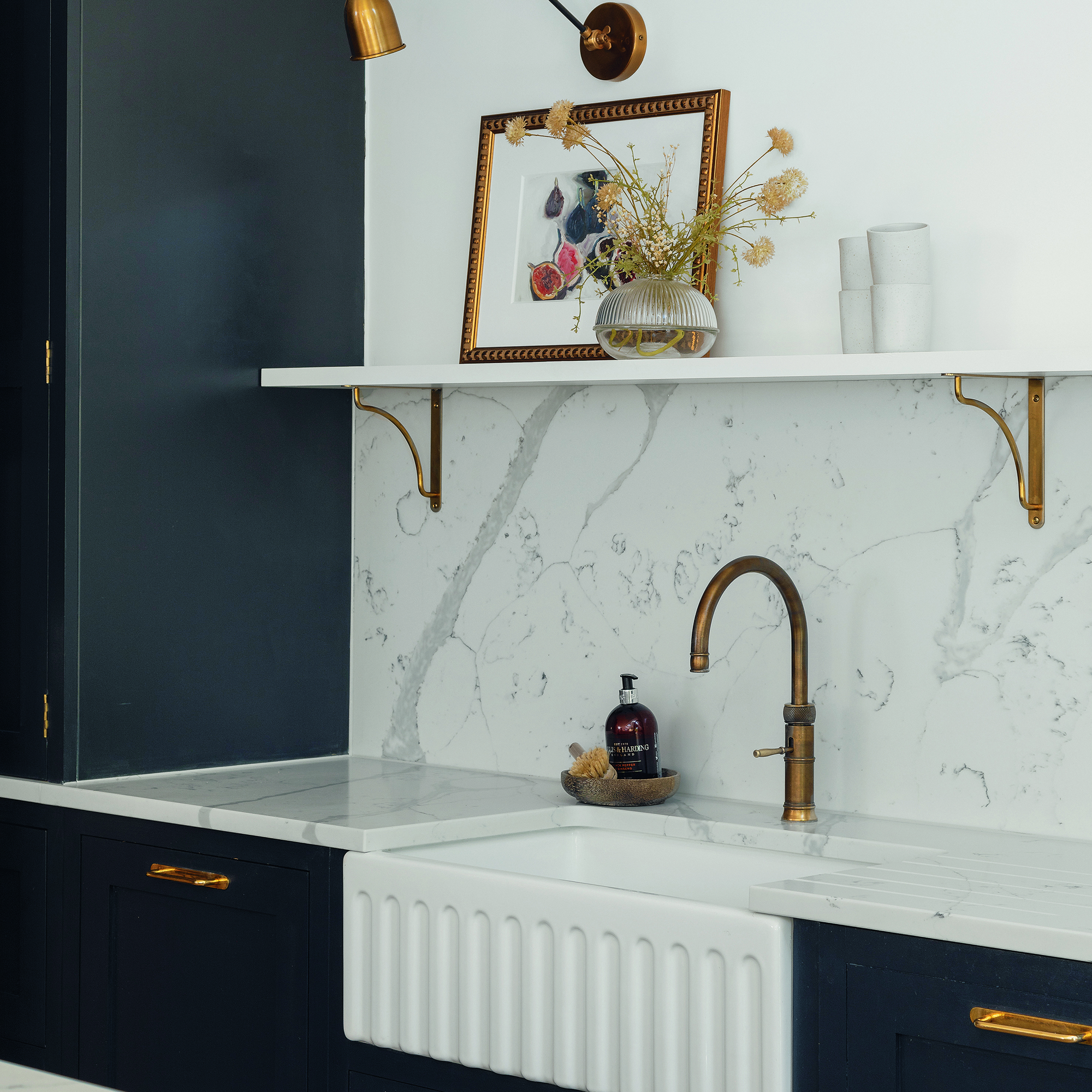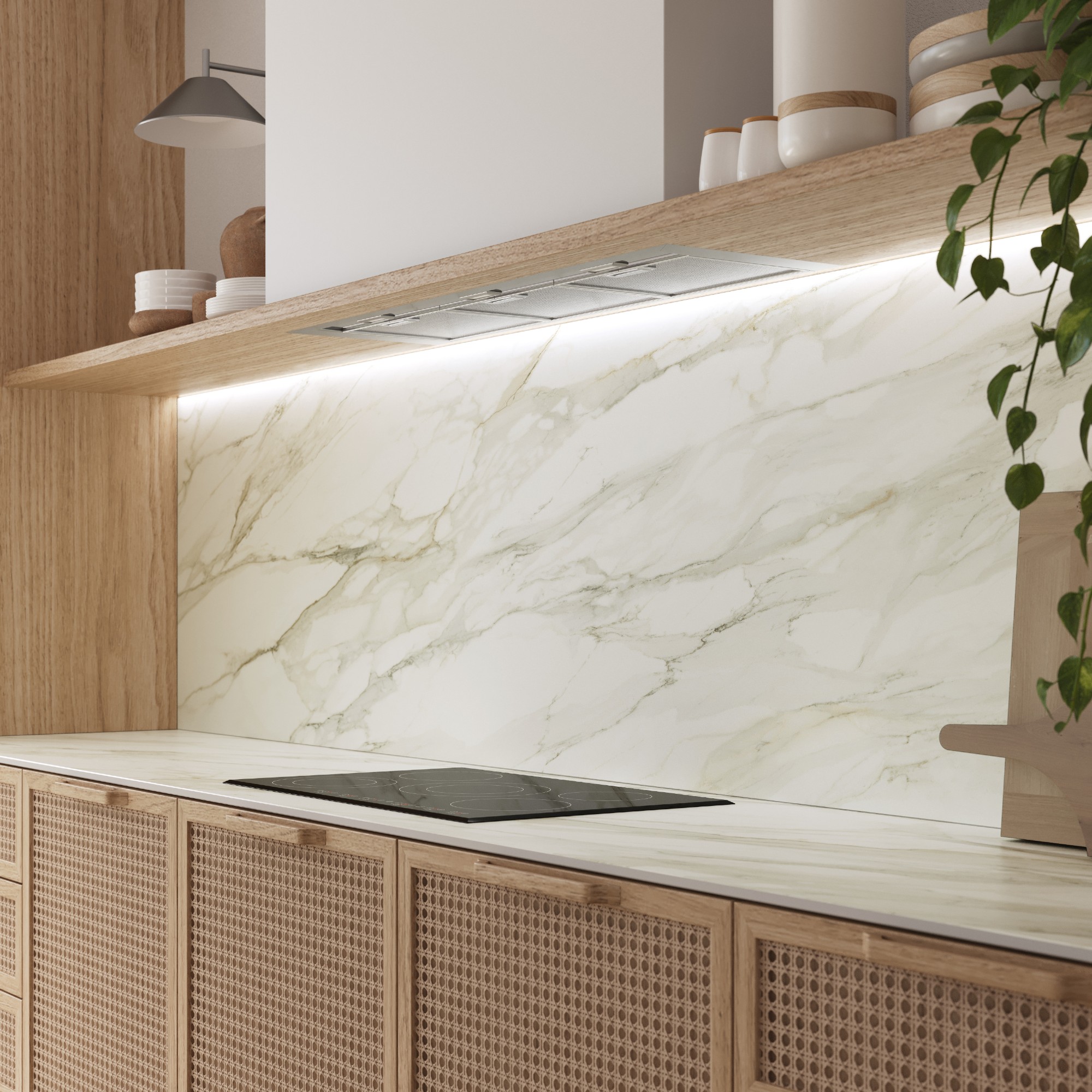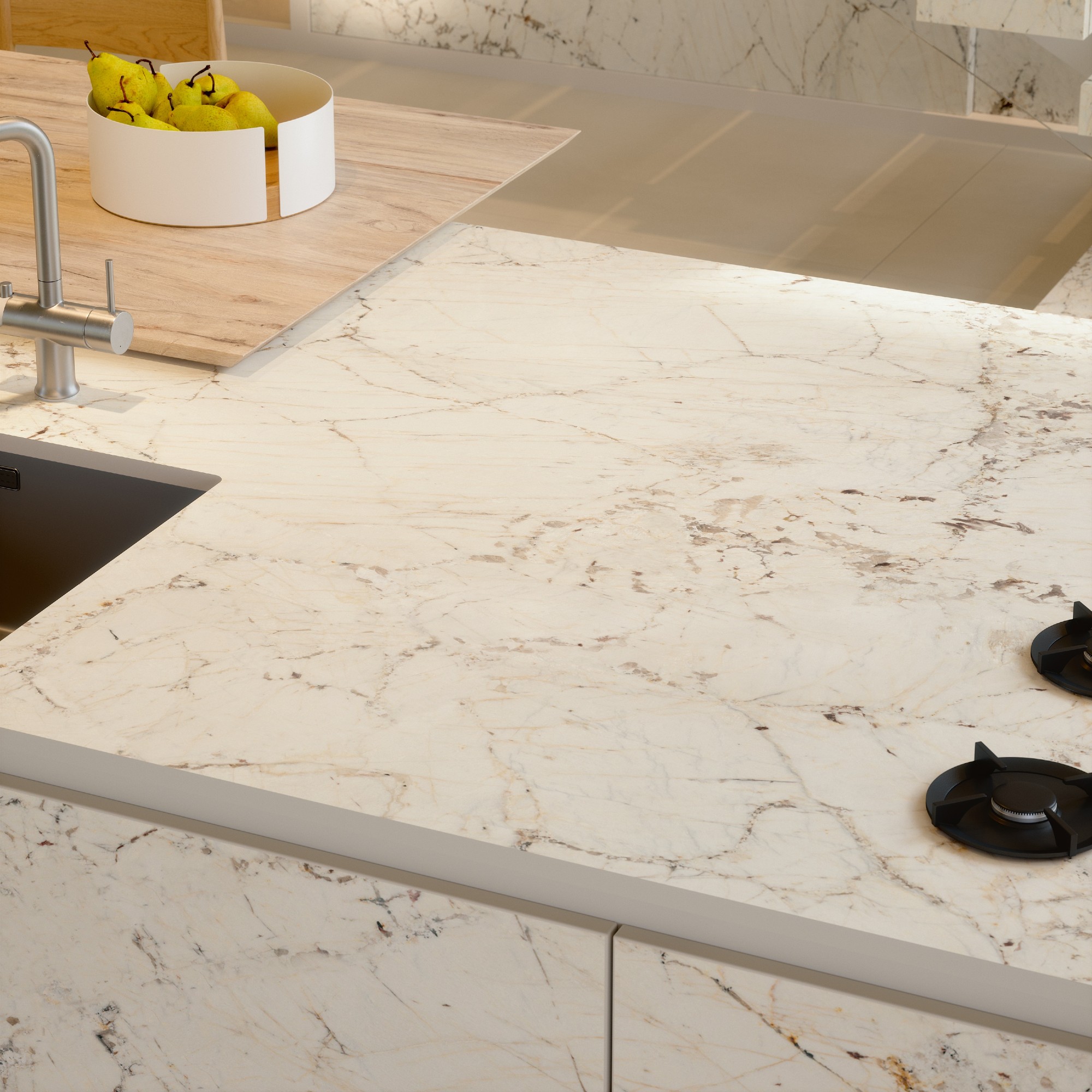
For most of us, a marble kitchen worktop with its beautiful and luxurious patterns is the dream. But sadly, that’s where it usually stays – in our dreams, as marble comes with its downsides from a hefty price tag to high maintenance and more. But there’s a new kitchen worktop favourite on the block that looks just like marble but is easier to care for and will cost you less – and that’s porcelain. So should you get a porcelain kitchen worktop?
This new kitchen trend is currently being adopted by many, including celebrities like male model David Gandy who’s got a marble-looking porcelain worktop in his Richmond home that he’s recently toured for the Sunday Times Style.
So if you want to join in on the porcelain worktop action and are thinking of going for this innovative kitchen worktop idea, then here’s everything you need to know about the material, the pros and cons according to experts.

Should you get a porcelain worktop?
Is it us or are celebrities really stepping up their kitchen worktop game as of late? From Tan France’s quartzite kitchen worktops in his new Salt Lake City home to Mark Wright’s unique marble veining, we’re getting kitchen worktop inspiration everywhere we look. And porcelain is making its mark in recent years, too.
‘The trend for using porcelain in our homes is, without a doubt, continuing to grow,’ says Jonathan Stanley, VP of marketing at Caesarstone. ‘Beautifully combining aesthetic with durability, porcelain ticks all the boxes for quality and versatility, and as such, outperforms natural stone alternatives such as marble and granite. Whether you’re after a bolder, dramatic style with a darker hue or looking to create a light, natural atmosphere with something softer, then this material can offer just that.’

The benefits of porcelain kitchen worktops
One of the biggest advantages of porcelain is its versatility and customisation potential, which is why it’s so easy to make it look like marble.
‘Porcelain worktops are one of our favourites when it comes to specifying kitchens,’ says Richard Davonport, managing director at Davonport. ‘There are so many options when it comes to picking colours and patterns. There is also the ability to personalise by tweaking the mineral composition so you can customise to your heart’s content.’
Richard moves onto the second biggest benefit of porcelain – stain resistance and easy maintenance. ‘The downside to marble is that it’s not stain-resistant so regular sealing by an expert is key. If you are wanting to create this look in your own home, then porcelain can be a great alternative.’

Jonathan at Caesarstone continues, ‘Porcelain is highly resistant to heat, scratches and stains, whilst also being non-porous and simple to clean. Because of its high resistance to heat, sunlight, UV and extreme weather conditions, porcelain is also suitable for outdoor use, for those looking to recreate a stylish and practical look in their outdoor kitchen.’
But we want to point out that despite being far more affordable than marble, porcelain is by no means cheap.
‘Although more affordable compared with real marble, porcelain still has a higher price tag than some alternatives such as laminate or wood,’ says Gavin Shaw, MD at Laminam. ‘Our top seller, Noir Desir, is around 30-40% cheaper than its natural equivalent – Noir Saint Laurent marble from France.’

How to care for porcelain worktops
Porcelain requires very little maintenance and needs pretty much the same amount of attention and care as something like a laminate worktop.
‘Porcelain is an extremely hygienic surface and best of all, easy to maintain and keep clean. For everyday cleaning, a simple wipe with clean water or a mild surface cleaner and a cloth will keep porcelain surfaces looking their best,’ Gavin explains.
It seems like porcelain is checking all the boxes to be the next ‘it’ kitchen worktop material.







